Sonic Mania is the sequel we've waited 23 years for
Digital Foundry on how today's tech powers the perfect follow-up to Sonic Team's classic work.
This is it - the game many of us have been waiting for since 1994: a proper follow-up to classic Sonic the Hedgehog games, a sequel that strives to expand and improve upon everything that made the originals great. But how did a group of fans that never lost hope in the series manage to create one of the best Sonic game ever made?
The origins of Sonic Mania begin more than a decade back when enthusiast Christian Whitehead began a journey to recreate the gameplay mechanics of Sonic 3 using fresh code, built up entirely from scratch with zero access to the original source. This ultimately resulted in the release of Retro Sonic - a demo of sorts built using this new codebase - which was released on Windows and Dreamcast. It was incomplete and buggy, but it offered a glimpse of what was to come.
Christian joined forces with others over time and continued to work on enhanced Sonic projects, such as Sonic XG, before eventually pouring efforts into recreating Sonic CD. This caught the eye of Sega, who tasked Christian and his colleagues in bringing classic Sonic titles to mobile and consoles. The quality of these ports is second to none by the way, and we highly recommend checking them out.
This success no doubt contributed to the birth of this new project - Sonic Mania. Christian joined forces with Pagoda West Games, Headcannon and composer Tee Lopes to build this brand new Sonic game. These guys know the classic gameplay inside-out and have managed to perfectly capture what it is that makes the originals so good to play. For starters, the physics and controls are spot-on - and this is something that no other Sonic game beyond 1994 has managed to get quite right. This new title nails it, Sonic responding exactly as he is meant to. On paper this doesn't sound like a big deal, but getting the mechanics of the game right has proved elusive for 23 years now.
The visual design is also super-authentic - dare we say it, perfect. The game takes things further than your typical indie pixel art title by embracing techniques that were impossible on the original Mega Drive hardware, so in that sense, Sonic Mania truly feels like a lost Sega Saturn game. For one thing, it makes full use of object scaling and rotation. Bosses leap into the screen, Sonic smoothly rotates on slopes and rings go flying in every direction. It's a big step up from the Mega Drive originals.
Simple polygonal graphics are also used - the 3D bonus stages are gorgeous and super smooth. These stages clearly take inspiration from Sonic CD but on the original hardware, these stages run at a very low frame-rate. Sonic Mania pushes things up to a full 60 frames per second, though in this one area, the Switch version can lag behind with some visible stutter and drops into the 50s. Incidentally, Sonic Mania's use of 3D also sees some polygonal objects placed within the environment and backgrounds, bringing extra depth to the scene.
Visually, Sonic Mania retains the signature 240p look of the original titles, but additional embellishments are made that wouldn't have been possible on original Mega Drive hardware. Additional background planes are available, meaning that we have multiple layered planes intersecting for the first time - it's a level of background complexity we've never seen in the series proper.
The new game also has access to a much broader colour palette, enabling smooth gradients and shading throughout. On top of this, sprite work is dramatically more complex with many frames of animation. Without hard limits on sprites per line, the game can also throw around a huge number of sprites without sacrificing performance.

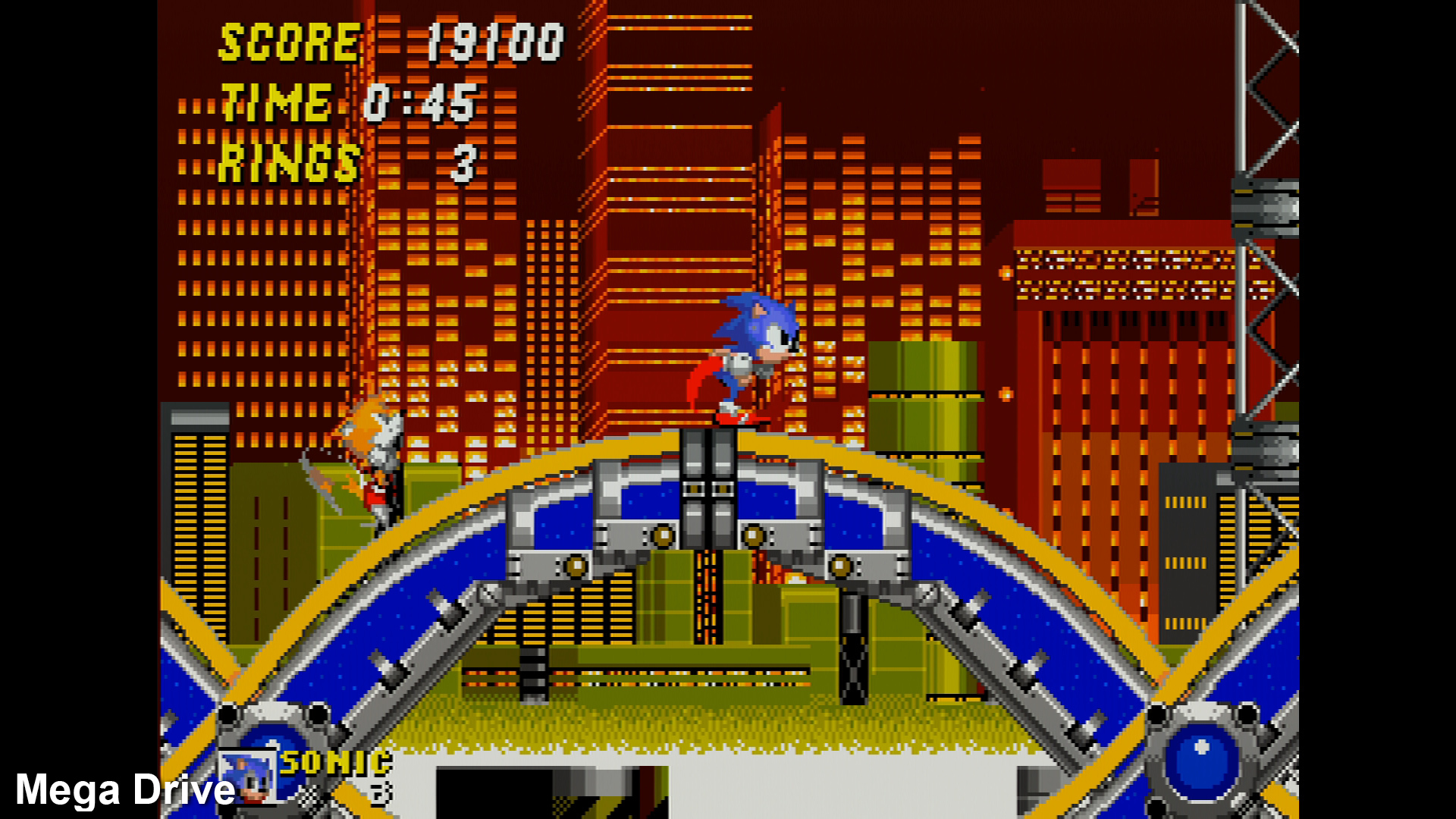
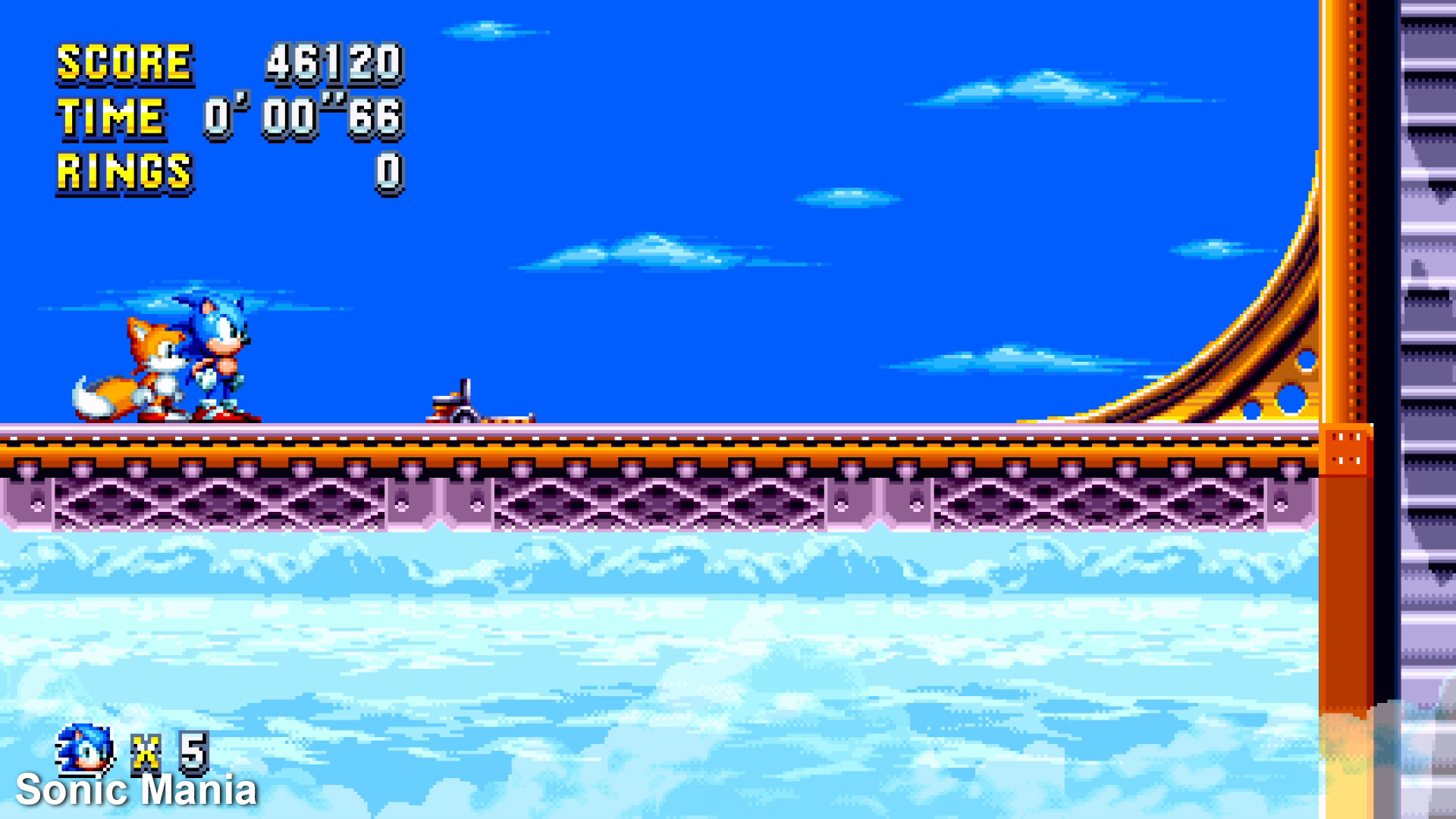
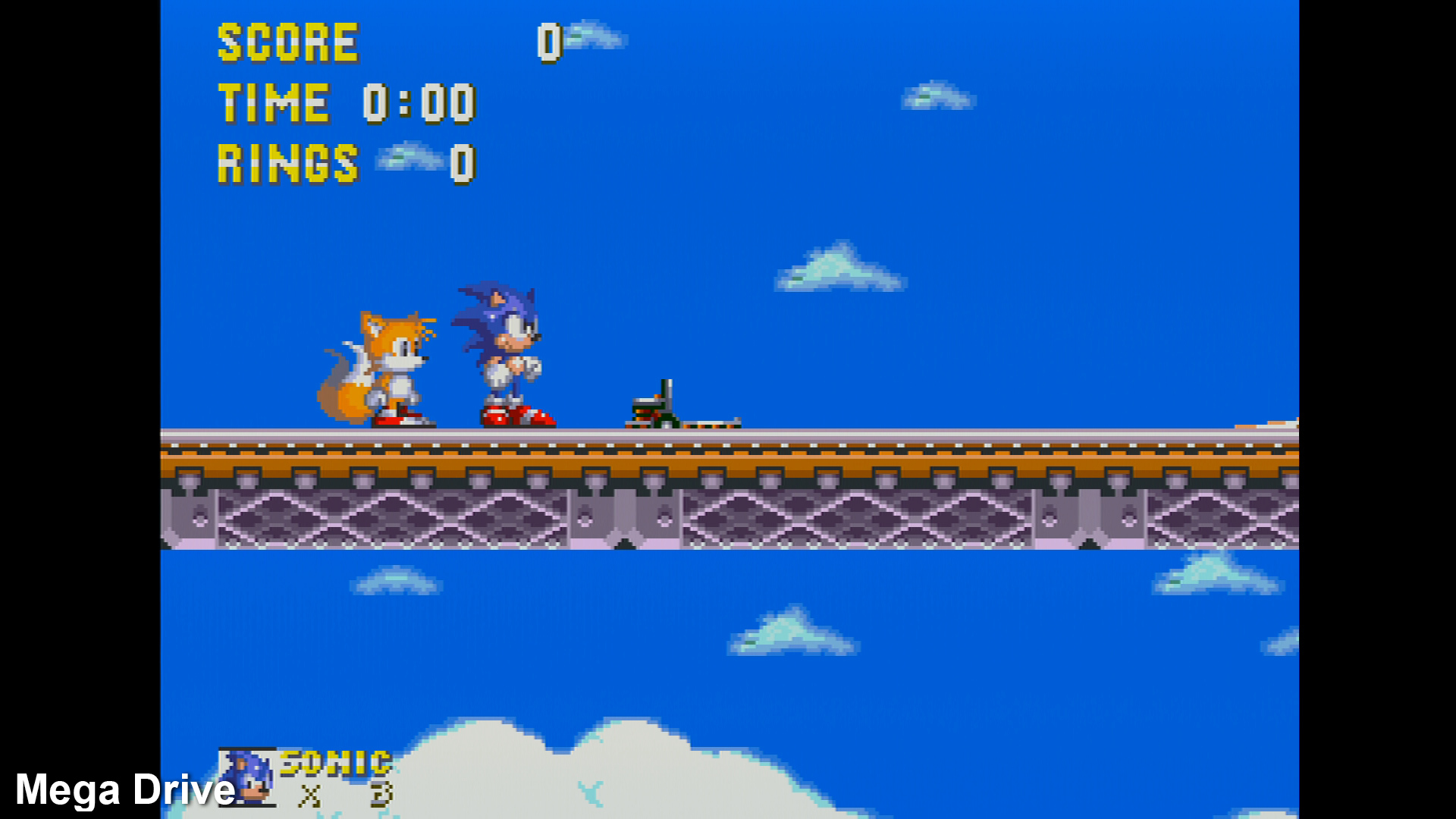
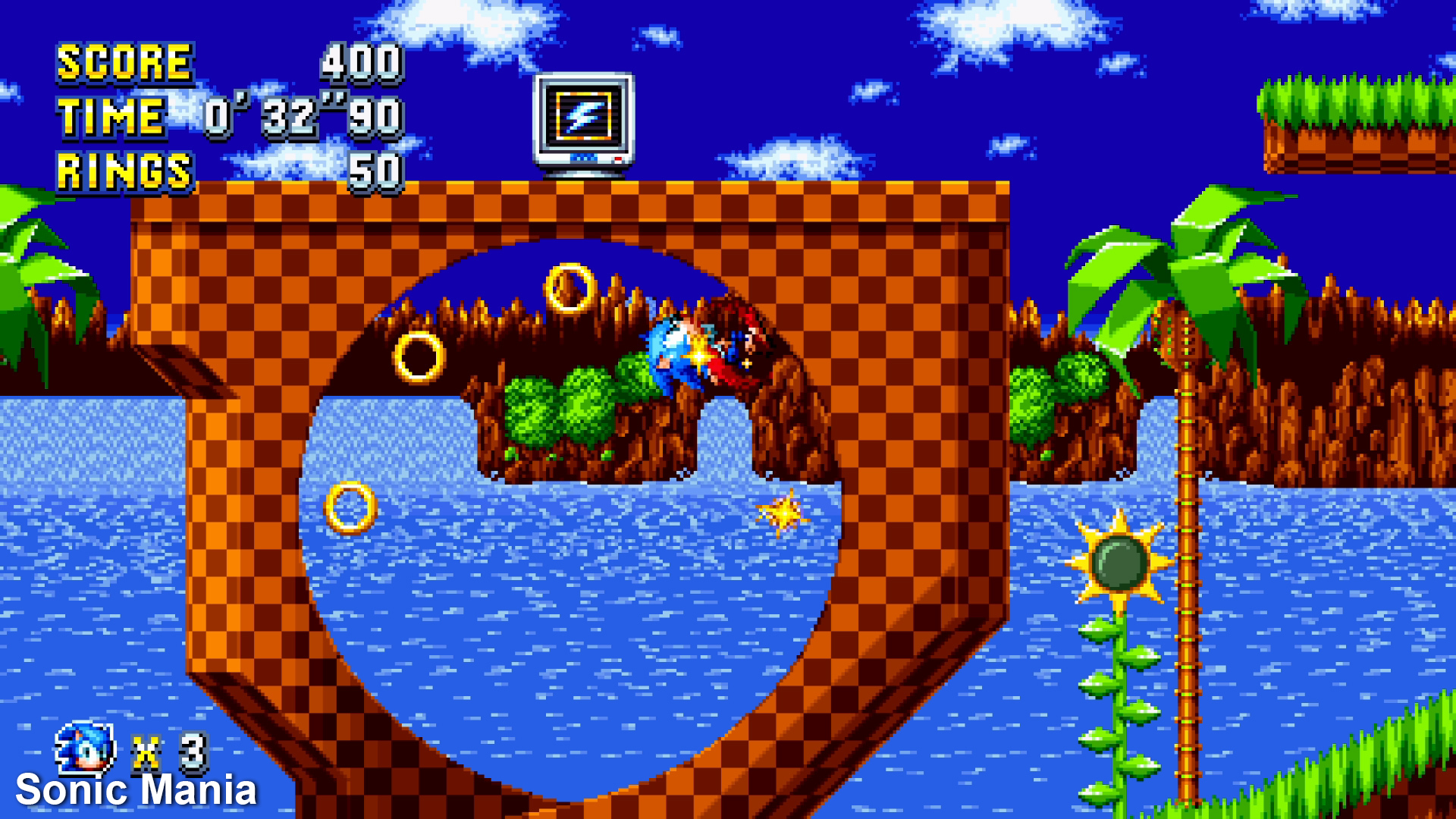
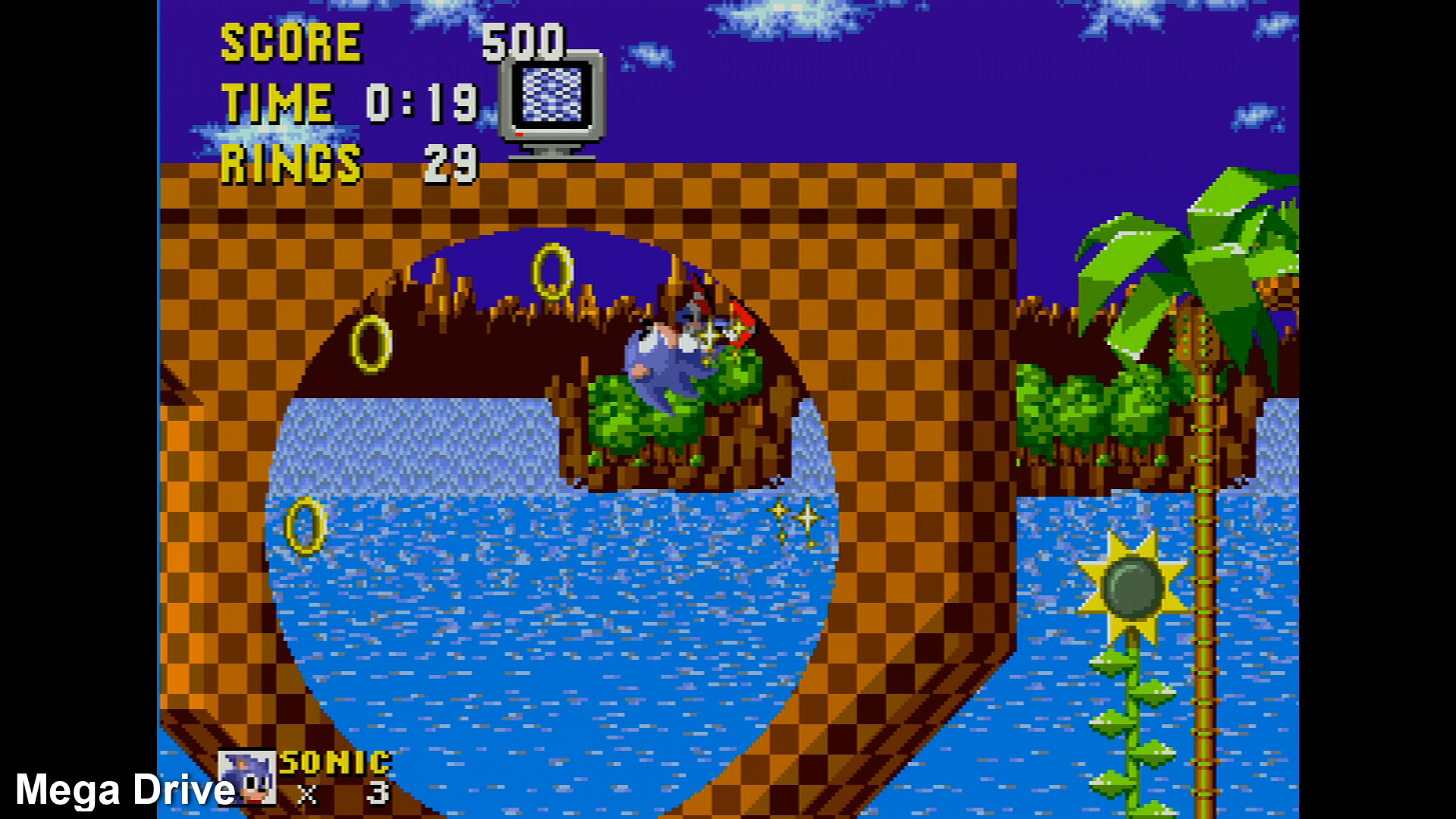
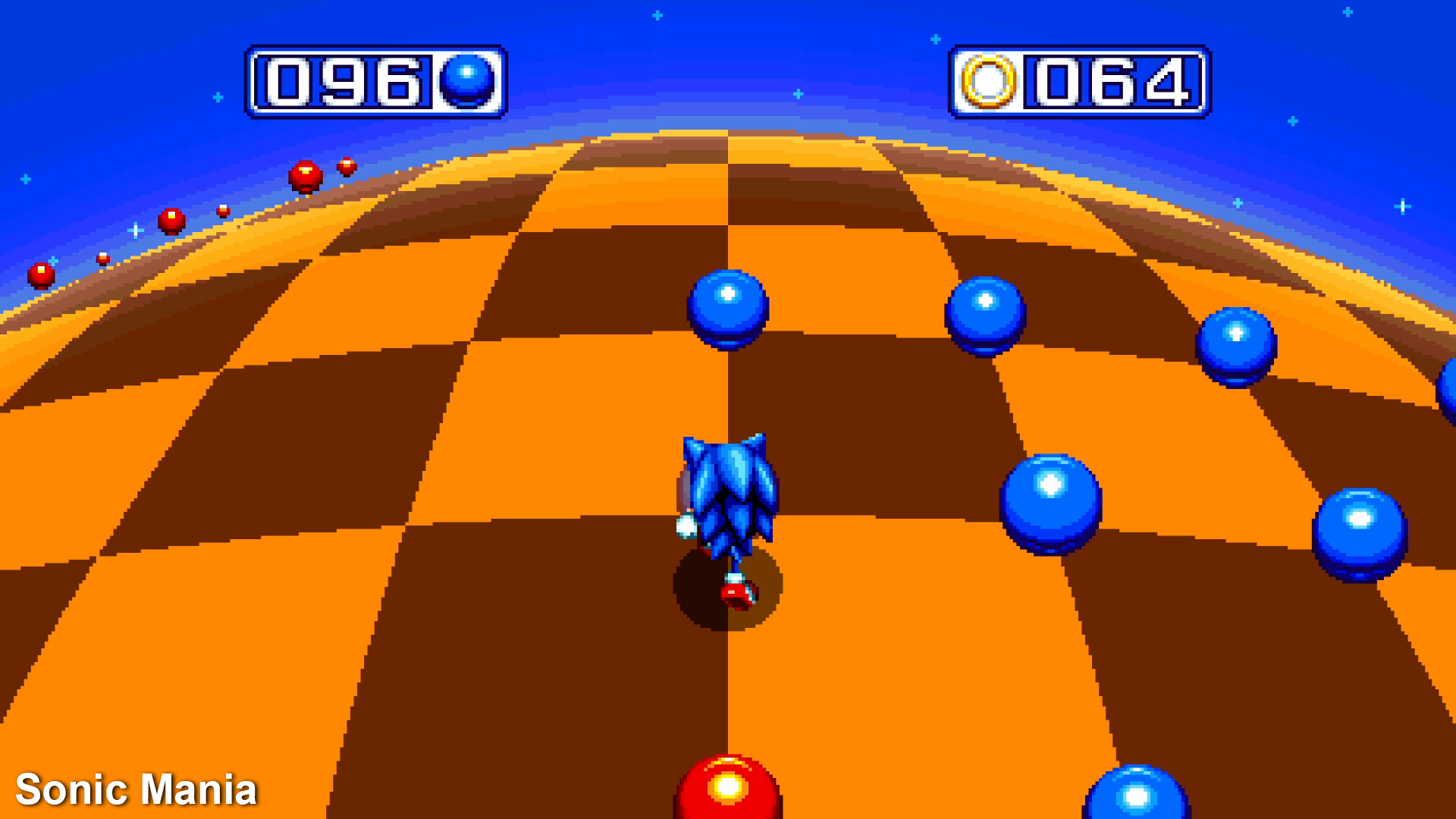
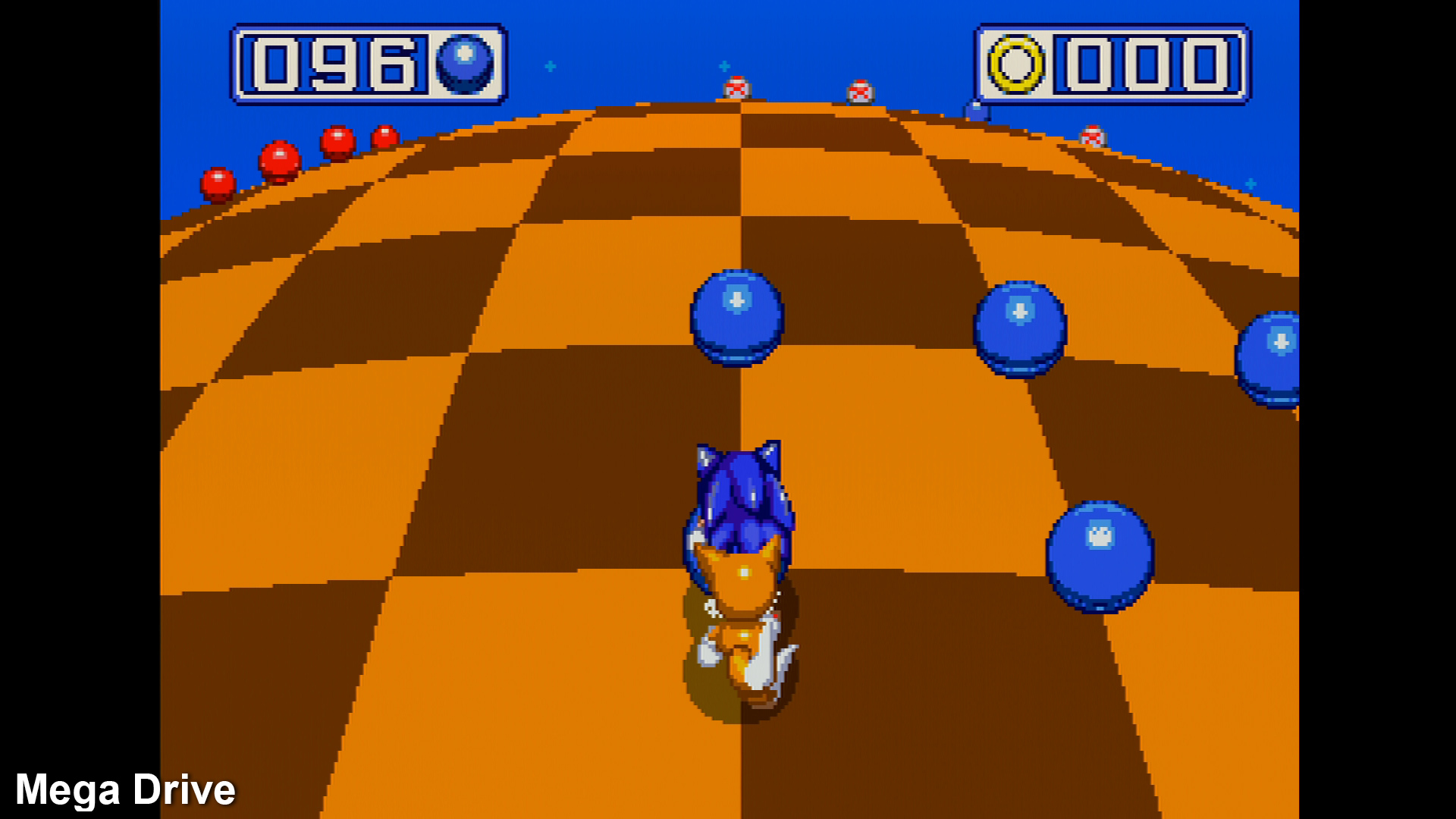
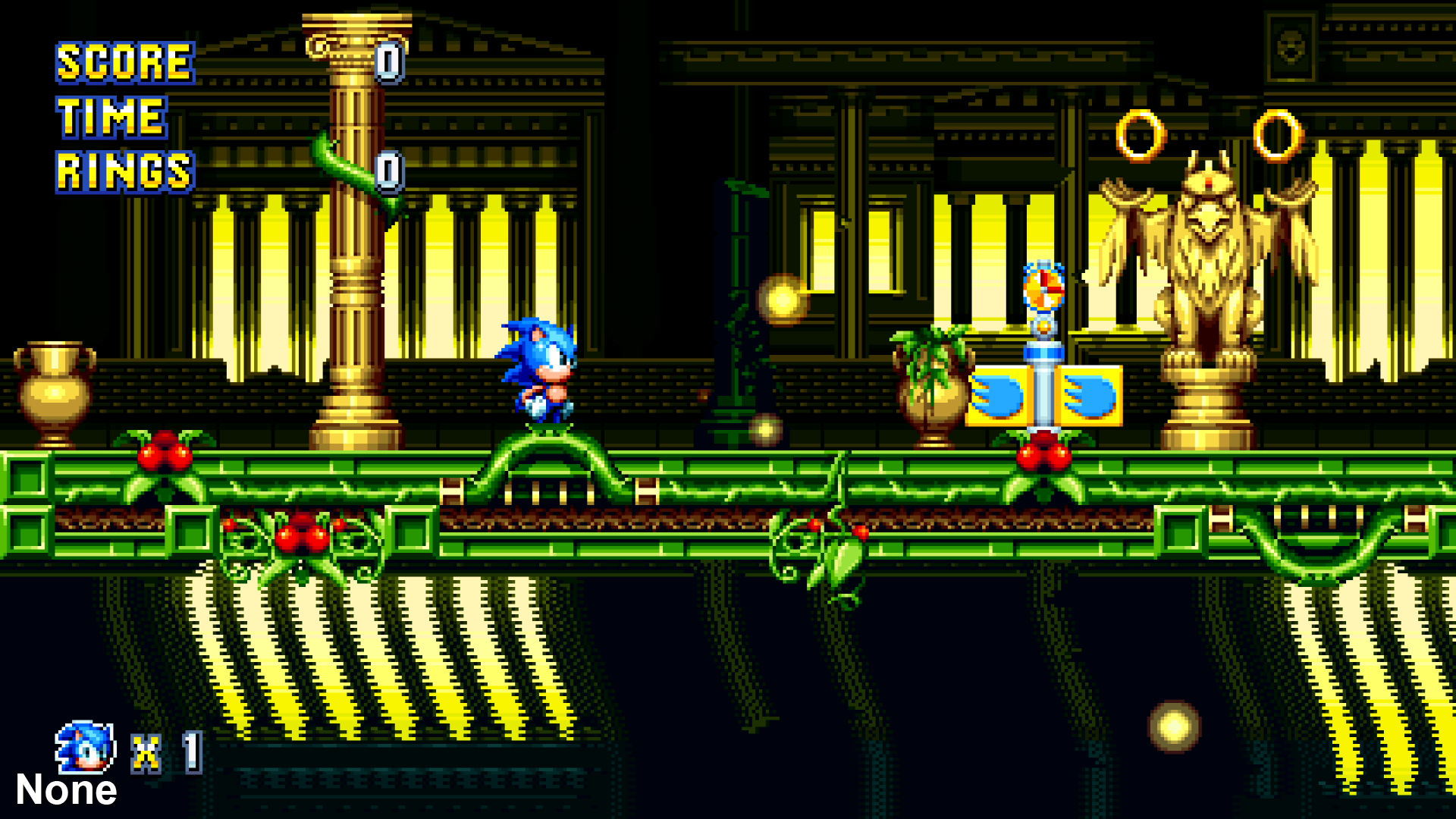

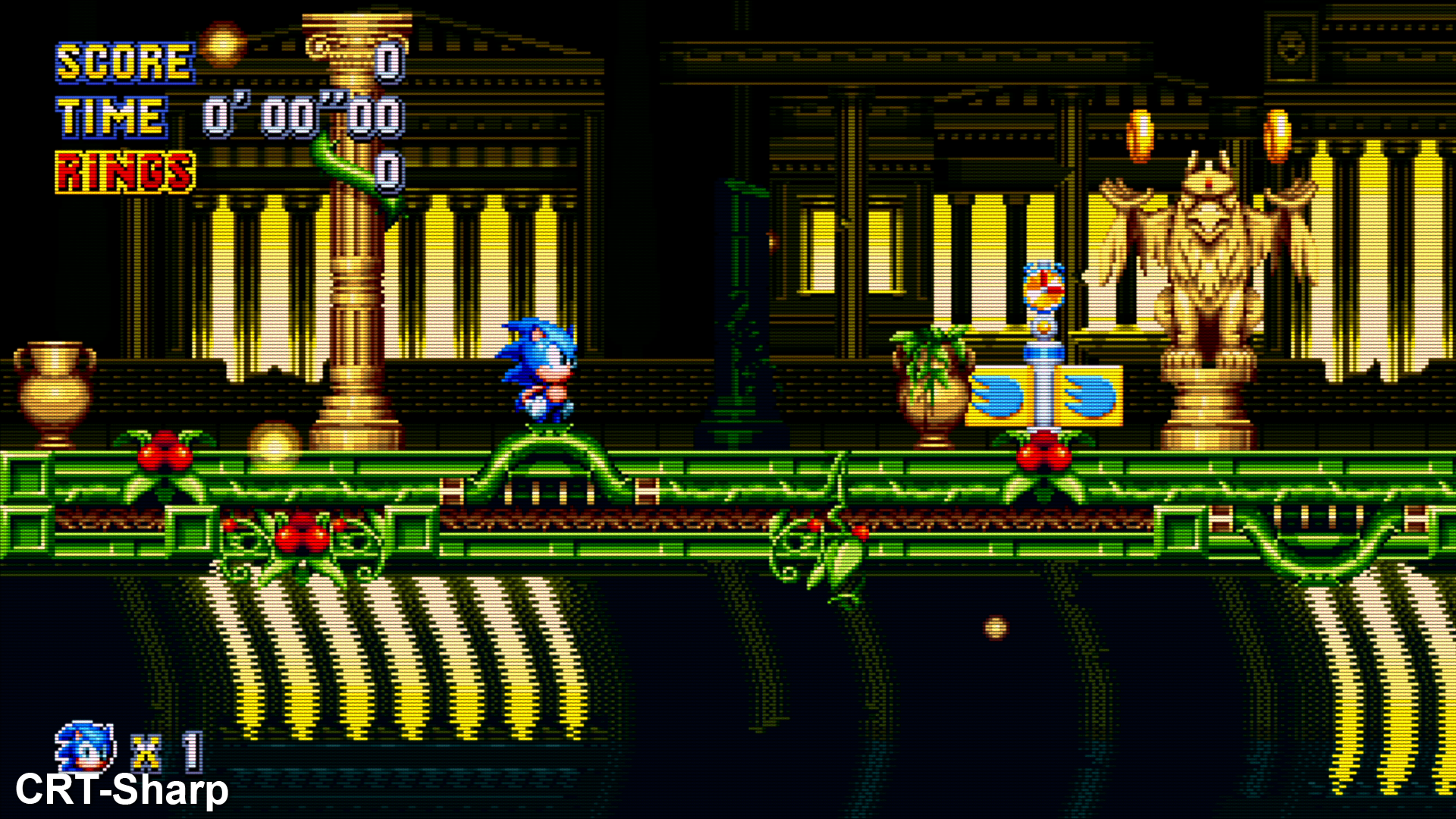
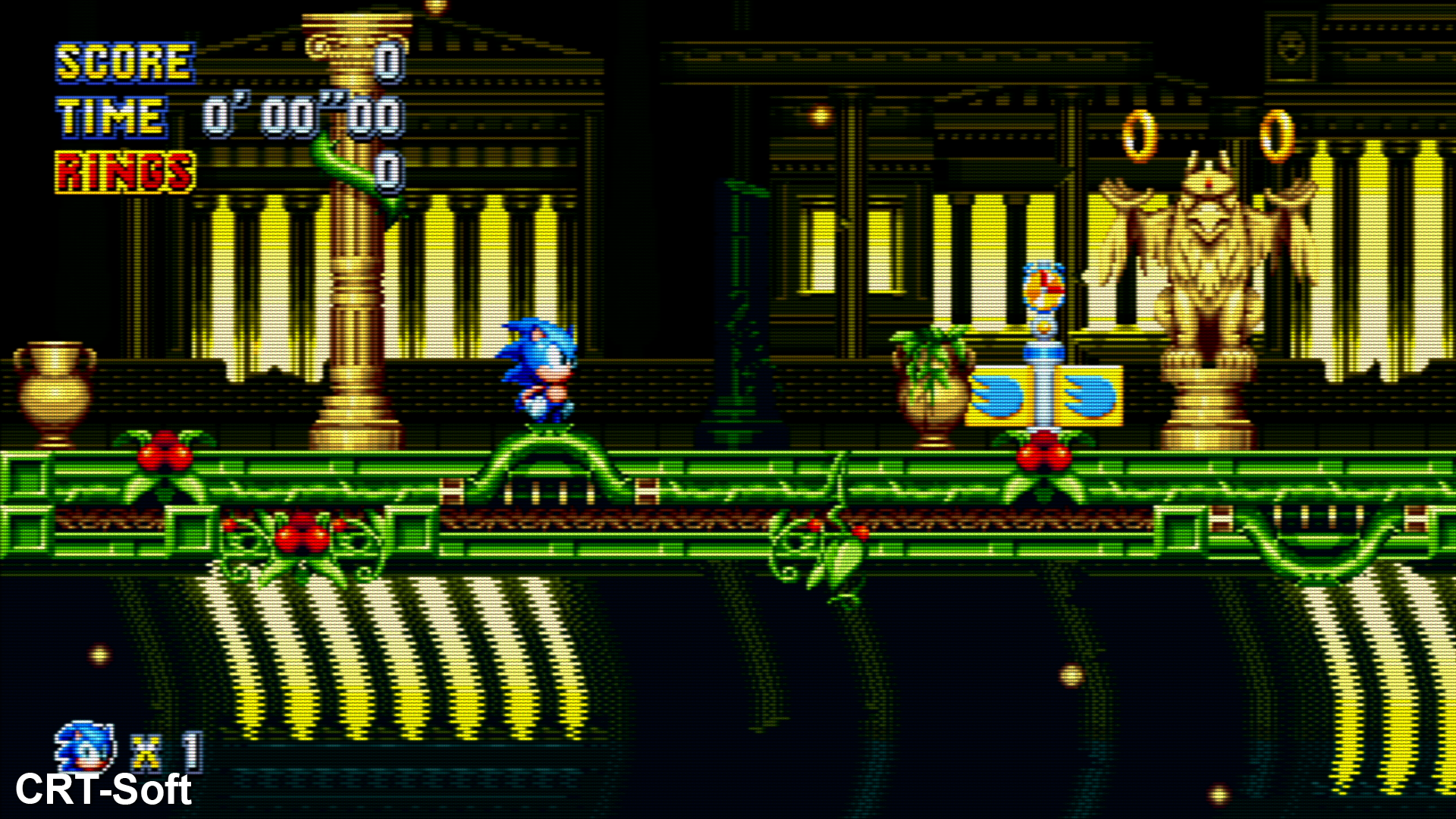
The visual design on display here really is fascinating - it shares many elements with the original 16-bit games but pushes things out in so many directions, introducing effects that would have been impossible at the time bringing it more in line with a Sega Saturn game - and even beyond. This feels like the logical next step for 2D Sonic.
So, by all accounts, this is a gorgeous game but how does it stack up across platforms and which display options are available? Well, to start with, the game includes four distinct visual modes: a smooth mode that applies a blur to pixel edges, two excellent CRT shaders and a razor-sharp mode. The CRT shaders look fantastic here and do a good job of approximating the look of a phosphor based display - this isn't just a case of scanlines slapped on an image.
But the pixel perfect mode is our favorite here and it also highlights the first console advantage - amazingly, Sonic Mania supports PS4 Pro. It outputs at native 2160p, enabling razor sharp pixels that line up perfectly with the pixel grid on a 4K TV. No blurring, no upscaling, no filtering. It looks great, and while all versions of Sonic Mania are superb, if you have a 4K screen, the Pro version is the one to get. Those playing on PS4, Xbox One or Switch get a maximum resolution of 1080p which also provides immaculate scaling on a 1080p TV. The Xbox One S can at least upscale to 4K, though it introduces a slight blur. Hopefully the game is updated to support Xbox One X later this year to allow for pixel perfect 4K output on that console as well.
Lastly, it would be remiss of us not to mention the soundtrack - music is critical to a Sonic game and Tee Lopes has handed in an excellent score here. The audio signature here is simply perfect. For those of us who spent so many hours playing the original titles, Sonic Mania has a sound that is so captivating that brings a smile to your face. And that's the key takeaway here, the aspect that makes this the game unmissable. Just like the original games, Sonic Manic is simply joyous - it's the kind of game that can genuinely brighten your day.
Whether you were a fan from back in the day or have only taken to platform games in recent years, Sonic Mania is a breath of fresh air, its arrival impacted only by reports of laggy or even unresponsive home and power buttons on the Switch version of the game. It's an even we've tried and failed to replicate, though the video evidence out there is undisputable. Christian Whitehead is on the case though and a title update is expected. It's a small blemish on a beautiful release though, and we strongly recommend checking it out.


